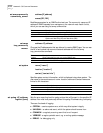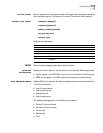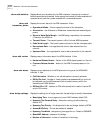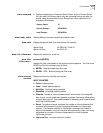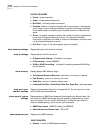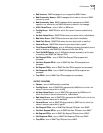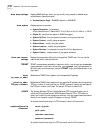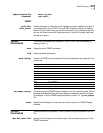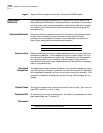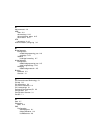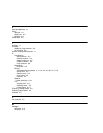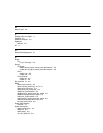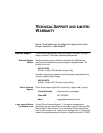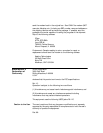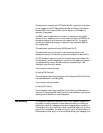
A-22 APPENDIX A: CLI COMMAND DESCRIPTION
Logout Leave the CLI and close this connection. This ends the TELNET session.
Command
Features
The command language has several built in features that make it easier to use.
When abbreviating commands, it is sometimes hard to remember the commands
and their syntax. Using command completion and positional help aids in jogging
your memory of the commands and their parameters while you are typing in a
command string.
Command Retrieval Command retrieval retrieves commands from the history of previous commands
entered. You can display the current command history using the history
command. You can change the number of commands kept in the command
history buffer using the set command history command.
Positional Help Positional help displays the list of possible parameters when you type ? after any
command or parameter . It then redisplays the line you typed, without the ?, so
you can enter the parameter you wish to use. This helps you find the parameter
you need, and add it to your command, without having to retype the entire
command string. Be sure to leave a space between the keyword and the question
mark to use positional help.
Command
Completion
The escape key provides command completion. If you press the escape key before
you finish typing a command or parameter, the rest of the command or parameter
will be displayed (completed), and you can continue entering the command. If the
command or parameter is ambiguous, the bell will ding, and the display will not
change.
Output Pause The output will pause when there is more than 24 lines of output. Type ‘more’ (or
press CR) to continue, or ‘quit’ to stop.
Command Kill To discontinue the current command action, and flush any commands which have
been typed ahead, use ^C (control-C).
Comments
^p recall the previous command in the history list
^n recall the next command in the history list
Nothing following a semicolon will be processed. This is useful when you are writing CLI
script files. The do command runs a CLI script.



